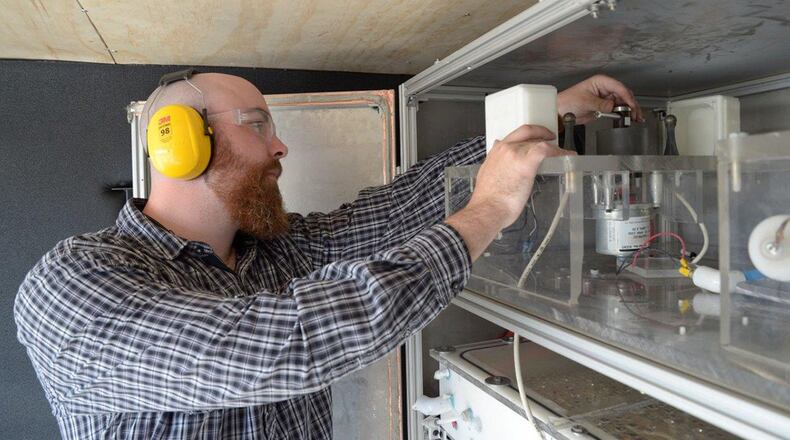The plasma reactor demo was funded by the Air Force Civil Engineer Center to identify potential cost-effective and sustainable environmental solutions for cleaning groundwater containing the perfluorooctane sulfonate and perfluorooctanoic acid.
The Air Force announced the plasma reactor’s field demonstration Nov. 5. The research and demonstration were conducted by a team from Clarkson University’s main campus in Potsdam, New York, and Clarkson’s teaming partner GSI Environmental.
On Nov. 7, the EPA announced it has awarded a phase II contract of up to $300,000 to the Clarkson/GSI team to develop their technology for the marketplace. The contract is funded through EPA’s Small Business Innovation Research program, which encourages the development and commercialization of novel technologies to protect human health and the environment.
With this new funding, the researchers are scaling up their operations.
“We are looking at a 2-year timeline for a complete commercialized product,” said Dr. Selma Mededovic, co-principal investigator from Clarkson’s Department of Chemical and Biomolecular Engineering.
While the Air Force funded the Clarkson University plasma reactor demonstration to address PFOS and PFOA, the researchers have known their technology can also address a wider range of contaminants, the researchers note.
“We are also looking into using our plasma-based treatment system to treat ion exchange regenerant brine (combining plasma with ion exchange), foam fractionate (combining plasma with foam fractionation), landfill leachate and Aqueous film forming foam formulations,” said Mededovic.
The plasma reactor is a closed system utilizing water, electricity and argon gas. It degrades and destroys the chemical chain that makes up PFOS and PFOA, using electrical discharge plasma. Chemically, the plasma reduces the PFOS and PFOA chemical chain down into smaller compounds and elements, through several cycles. In all previous samples, both PFOS and PFOA concentrations in water were reduced to less than 70 parts per trillion, in one minute of treatment, according to the research team.
The EPA has established 70 parts per trillion as its health advisory level to protect humans through their life from adverse health effects resulting from exposure to PFOS and PFOA in drinking water. The Air Force has adopted this as its standard as well.
Current technologies exist to filter PFOS and PFOA from water, but those chemical compounds are not destroyed.
The plasma reactor was one of nine projects funded for further development by the EPA Nov. 7. The agency awarded $2.7 million to small businesses to further develop and commercialize innovative technologies that protect the environment while growing the American economy.
“Small businesses provide the foundation of our economy and are incubators of innovative ideas that create jobs, improve lives and protect the environment,” said EPA Administrator Andrew Wheeler. “With this funding, small businesses across the country will be able to help further EPA’s mission of protecting the environment and public health. I’m proud to support these important projects to address not only the challenges we face as a nation, but also the opportunities to be had through new and emerging technology.”
PFOS and PFOA are synthetic chemical compounds have been used for decades in many industrial and consumer products, and there is evidence that exposure to PFOS and PFOA can lead to adverse human health effects, according to the Environmental Protection Agency. Both chemicals are very persistent in the environment and in the human body – meaning they don’t break down over time.
To learn more about the Air Force's efforts regarding PFOS and PFOA, visit https://www.afcec.af.mil/WhatWeDo/Environment/Perfluorinated-Compounds/.
About the Author
